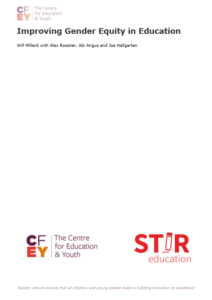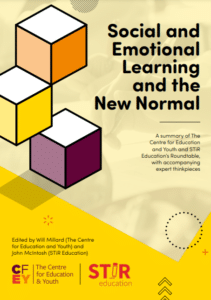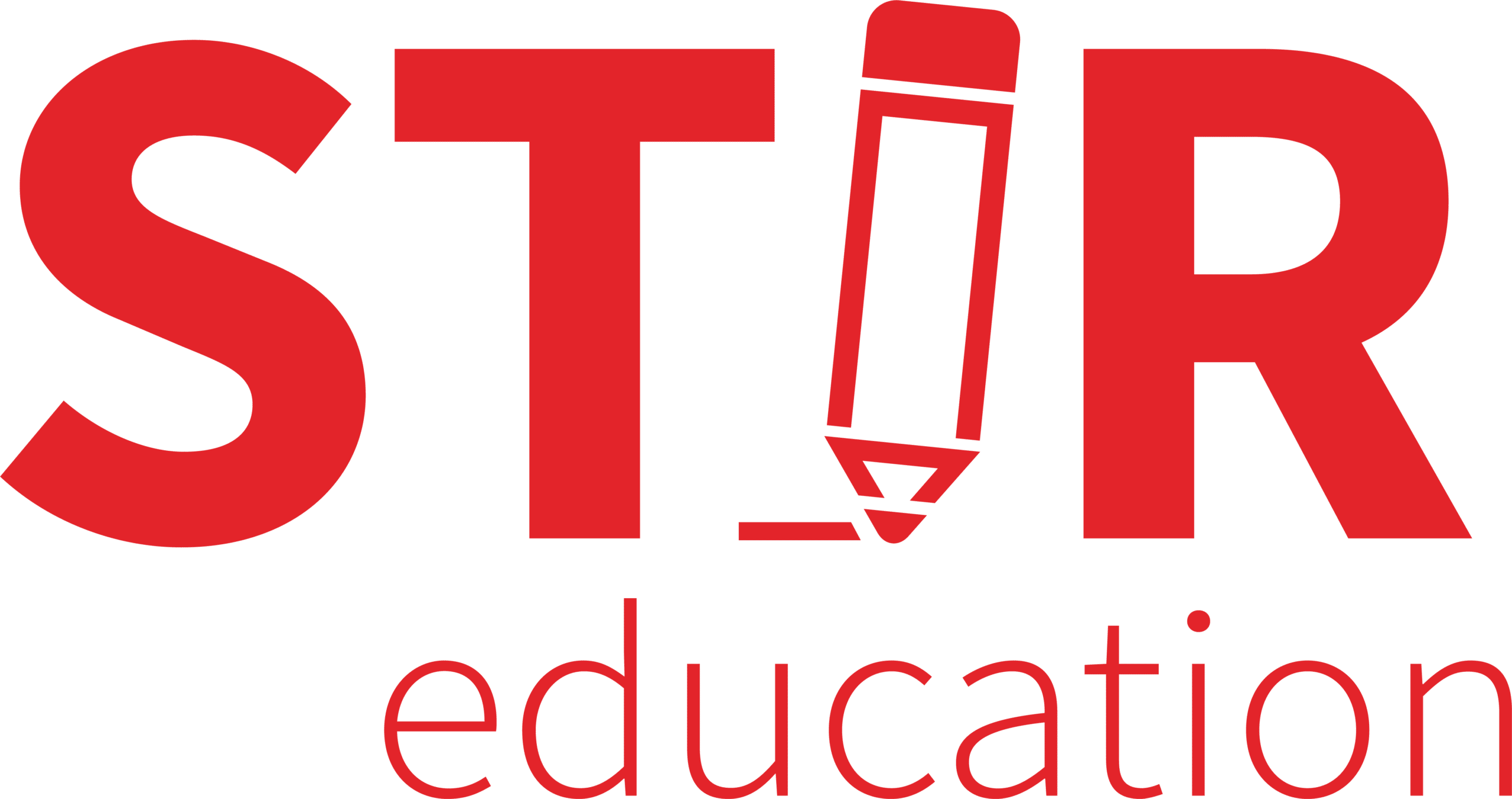Improving Gender Equity in Education
What did we do?
The Centre for Education and Youth has been working with STiR Education to identify the approaches most likely to support improved gender equity for school pupils and professionals. STiR Education is an international NGO that supports education systems in India, Uganda and Indonesia to reignite intrinsic motivation in teachers and officials.
CfEY conducted research in two phases. The first was a rapid evidence review of the existing literature. The second phase involved a consultation with STiR Education’s employees and external partners. We synthesised findings from these two phases, making recommendations to STiR Education about how it can increase its impact on gender equity in the systems in which it operates.
Our report provides information relating to the promotion of gender equity in education. It addresses two research questions:
- What practices are effective in promoting gender equity for children in education, particularly in low- and middle-income countries?
- What practices are effective in promoting gender equity for teachers and education officials, particularly in low- and middle-income countries?
Here we present findings from our rapid evidence review.
This is the second report we’ve published in partnership with STiR Education, the first examining how the pandemic has affected social and emotional learning, which we published in 2020. This report also builds on our growing body of international research, including on assessment innovations for Making Waves, and with the Estonian government on teacher training.
Why did we do this?
Across the globe, education offers young people better health, higher earnings and greater control over their lives. Gender equity in education has broad positive impacts on families, communities and societies, contributing to economic growth, labour productivity and social mobility.[1] What is good for gender equity in education is good for societies and economies as a whole.
However, despite significant progress in recent years, girls remain much more likely to be excluded from education than boys in many parts of the world, particularly in poorer countries.[2] These inequities in participation are reflected in outcomes; 21 out of 25 countries where there is more than a 5 per cent gap between girls and boys in completion rates at primary level are low-income and lower-middle-income countries.[3]
Evidence indicates that girls and women are disproportionately and negatively affected by pandemics.[4] During the COVID-19 pandemic girls who were unable to access education during the pandemic are less likely to return to education than boys.[5] It is vital to consider not only gender equity among children in education but also among educators, since women appear to have been more vulnerable to job loss than men during the pandemic.[6]
What did we find?
Our rapid evidence review makes a series of recommendations about how organisations and programmes can improve gender equity.
Principles for programme design
- Blend targeted with universal interventions to achieve a balance between initiatives that target girls and women specifically, versus more general interventions that seek to support all pupils, school leaders and officials. The right balance may vary depending on local context.
- Address multiple disadvantages, acknowledging that gender is one of many factors that contributes to educational and professional inequalities. In different contexts, factors such as socioeconomic status, ethnicity and geography also exert a powerful influence on gender outcomes.
- Use multi-stranded interventions that support longevity. Sometimes initiatives can be a ‘flash in the pan’. Programmes targeting gender equity should consider how to achieve the right balance between short-term, fast improvements in gender equity, and longer-term, sustainable changes.
Working with partners and building networks
- Adapt practices to gender-specific and cultural contexts. Gender norms and expectations look and feel very different in different localities, and organisations targeting gender equity must ensure programmes are sensitive to these differences.
Developing the evidence base
- Contribute to building the evidence base. Organisations targeting gender equity have an important opportunity to build understanding of what interventions support improved gender equity in the contexts in which they operate.
- Explore how education interacts with other policy areas to address the wider determinants of gender equity. Organisations targeting gender equity should evaluate how their programmes interact with other activities underway in their localities, to understand how they can add most value alongside other public policy initiatives for example in health.
[1] Evans, D. and Yuan, F. (2019). ‘What we learn about girls’ education from interventions that do not focus on girls’, World Bank, Policy Research Working Paper No. 8944. <https://papers.ssrn.com/sol3/papers.cfm?abstract_id=3430559>
[2] UNESCO Institute for Statistics. (2019). ‘New methodology shows that 258 million children, adolescents and youth are out of school’, UIS Fact Sheet No. 56. <http://uis.unesco.org/sites/default/files/documents/new-methodology-shows-258-million-children-adolescents-and-youth-are-out-school.pdf>
[3] Evans, D. and Yuan, F. (2019). ‘What we learn about girls’ education from interventions that do not focus on girls’, World Bank, Policy Research Working Paper No. 8944. <https://papers.ssrn.com/sol3/papers.cfm?abstract_id=3430559>
[4] Hallgarten, J. (2020). ‘Evidence on efforts to mitigate the negative educational impact of past disease outbreaks’, Helpdesk Report: Knowledge, evidence and learning for development. https://opendocs.ids.ac.uk/opendocs/bitstream/handle/20.500.12413/15202/793_mitigating_education_effects_of_disease_outbreaks.pdf?sequence=6&isAllowed=y
[5] Malala Fund. (2020). Girls’ Education and COVID-19: What Past Shocks Can Teach Us about Mitigating the Impact of Pandemics, Malala Fund: Washington, DC. <https://downloads.ctfassets.net/0oan5gk9rgbh/6TMYLYAcUpjhQpXLDgmdIa/3e1c12d8d827985ef2b4e815a3a6da1f/COVID19_GirlsEducation_corrected_071420.pdf>
[6] Madgavkar, A., White, O., Krishnan, M., Mahajan, D. and Azcue, X. (2020). COVID-19 and Gender Equality: Countering the Regressive Effects, McKinsey & Company: New York. <https://www.mckinsey.com/featured-insights/future-of-work/covid-19-and-gender-equality-countering-the-regressive-effects>
In partnership with:


